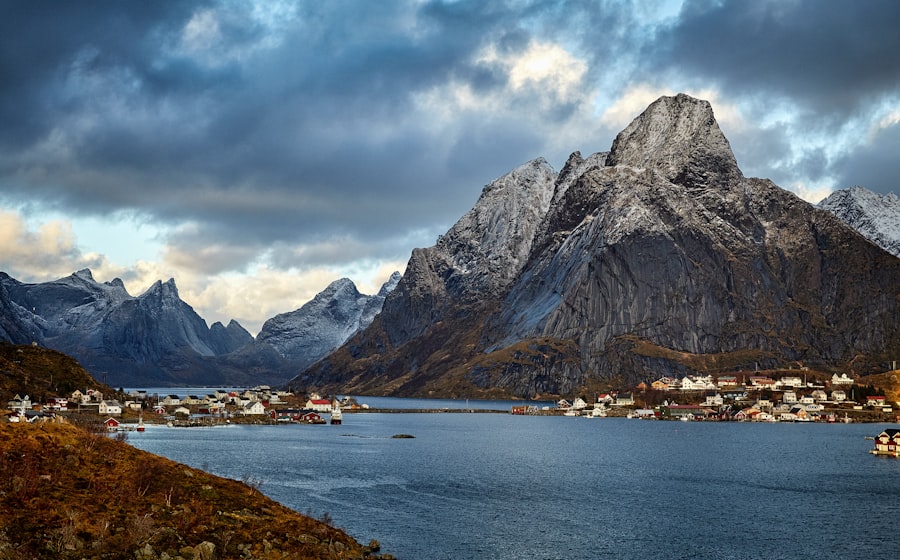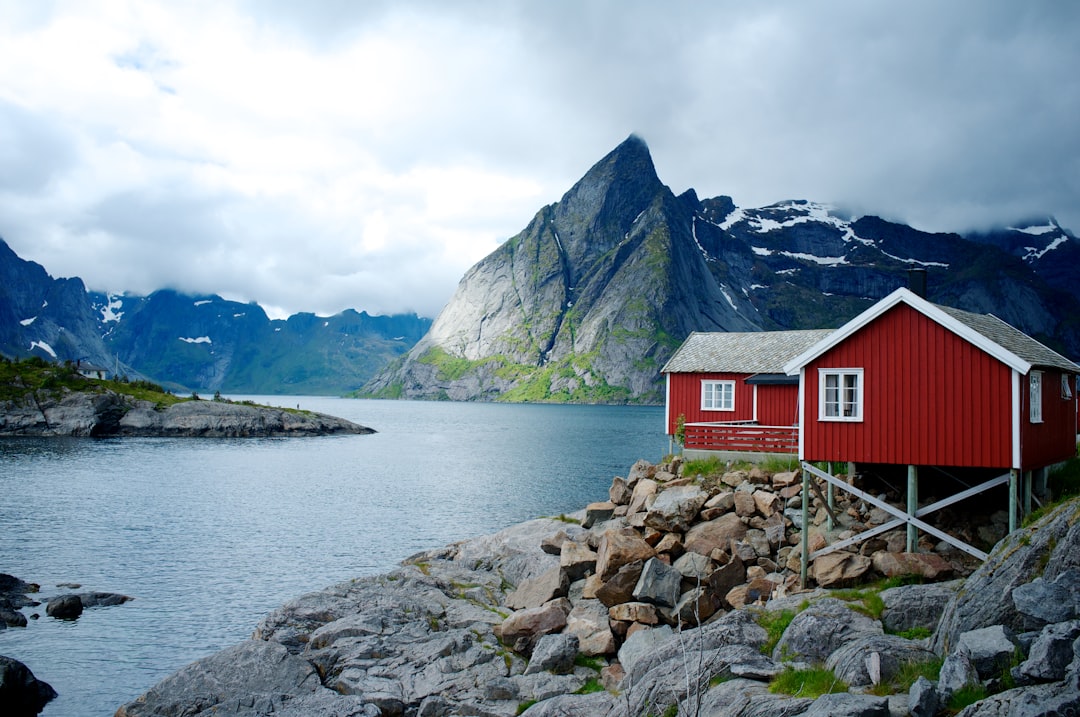Cycling in Norway is more than just a mode of transport; it is a way of life that intertwines with the country’s stunning natural landscapes and vibrant urban environments. With its breathtaking fjords, majestic mountains, and picturesque towns, Norway offers an unparalleled backdrop for cycling enthusiasts. The country’s commitment to sustainability and eco-friendly practices has further propelled cycling into the limelight, making it an attractive option for both locals and visitors alike.
As cities expand and the need for efficient transportation grows, cycling has emerged as a practical solution that promotes health, reduces carbon footprints, and enhances the overall quality of life. In recent years, Norway has made significant strides in developing its cycling infrastructure, ensuring that both seasoned cyclists and novices can navigate the roads safely and enjoyably. The government has invested heavily in creating bike lanes, improving road safety, and promoting cycling as a viable alternative to driving.
This commitment to cycling is evident in the increasing number of bike-sharing schemes and community initiatives aimed at encouraging more people to take up cycling. As a result, the cycling culture in Norway is thriving, with a growing community of cyclists who embrace the freedom and joy that comes with riding a bike. Book your 1-hour strategy session with Norway Relocation Group.
Summary
- Cycling is a popular mode of transportation in Norway, with a growing emphasis on urban cycling infrastructure and a strong cycling culture.
- Norway’s bike lane system is well-developed, with designated lanes for cyclists and clear signage to help navigate the roads safely.
- It’s important for cyclists to understand and adhere to traffic laws and regulations in Norway, including rules for right of way and helmet requirements.
- Safe cycling in Norway requires proper equipment, such as reflective clothing and lights, as well as awareness of weather conditions and road hazards.
- Embracing the Norwegian cycling lifestyle means not only enjoying scenic cycling routes, but also prioritising bike maintenance and integrating cycling into daily life for a sustainable and healthy lifestyle.
Understanding the Bike Lane System
Norway’s bike lane system is designed to accommodate cyclists of all skill levels while ensuring their safety on the roads. In urban areas, dedicated bike lanes are often separated from vehicular traffic, providing a safer environment for cyclists. These lanes are typically marked with clear signage and painted lines, making it easy for both cyclists and drivers to understand their respective spaces.
In addition to designated bike lanes, many cities have implemented bike paths that run alongside pedestrian walkways, allowing for a more integrated approach to urban mobility. Understanding the layout of bike lanes is crucial for any cyclist navigating Norwegian cities. In Oslo, for instance, the bike lane network is extensive and well-planned, connecting various neighbourhoods and key destinations.
Cyclists should familiarise themselves with local maps and resources that highlight bike routes, as well as any potential hazards or construction areas that may affect their journey. Moreover, it is essential to be aware of the rules governing bike lane usage, such as yielding to pedestrians at crossings and adhering to traffic signals. By understanding the bike lane system, cyclists can enjoy a safer and more efficient riding experience.
Navigating Traffic Laws and Regulations

Cycling in Norway comes with its own set of traffic laws and regulations that every cyclist must adhere to for their safety and the safety of others. One of the fundamental rules is that cyclists must always ride in the same direction as traffic. This not only helps maintain order on the roads but also reduces the risk of accidents.
Additionally, cyclists are required to use lights when riding at night or in low visibility conditions, ensuring they are visible to other road users. Another important regulation is the prohibition of cycling on pedestrian-only paths unless explicitly permitted. This rule is designed to protect pedestrians and maintain a harmonious coexistence between cyclists and walkers.
Cyclists should also be aware of their responsibilities at intersections, where they must yield to vehicles when necessary and follow traffic signals diligently. By understanding and respecting these laws, cyclists contribute to a safer environment for everyone on the road.
Tips for Safe Cycling in Norway
Safety should always be a top priority for cyclists in Norway. One of the most effective ways to ensure safety is by wearing a helmet at all times. While it may not be legally required for adults, wearing a helmet significantly reduces the risk of head injuries in case of accidents.
Additionally, cyclists should invest in high-visibility clothing or accessories, especially when riding during dusk or dawn when visibility is compromised. Another crucial tip for safe cycling is to remain vigilant and aware of one’s surroundings. Cyclists should constantly scan the road ahead for potential hazards such as potholes, debris, or parked cars that may suddenly open their doors.
It is also advisable to maintain a safe distance from vehicles, particularly larger ones like buses or trucks that may have blind spots. By staying alert and practising defensive cycling techniques, riders can navigate Norway’s roads with confidence.
Exploring Urban Cycling Infrastructure
Norway’s urban cycling infrastructure has evolved significantly over the years, reflecting the country’s commitment to promoting sustainable transport options. Cities like Oslo have invested heavily in creating an extensive network of bike lanes, bike-sharing schemes, and secure parking facilities for cyclists. This infrastructure not only encourages more people to cycle but also enhances the overall cycling experience by making it safer and more convenient.
In addition to dedicated bike lanes, many urban areas have introduced bike-friendly traffic signals that prioritise cyclists at intersections. These signals often feature separate phases for cyclists, allowing them to cross safely without competing with motor vehicles. Furthermore, cities are increasingly incorporating green spaces into their cycling infrastructure, creating pleasant routes that enhance the aesthetic appeal of cycling while promoting environmental sustainability.
As urban cycling infrastructure continues to improve, it becomes easier for residents and visitors alike to embrace cycling as a primary mode of transport.
The Importance of Bike Maintenance

Proper bike maintenance is essential for ensuring a safe and enjoyable cycling experience in Norway. Regularly checking your bike’s brakes, gears, and tyres can prevent accidents and enhance performance on various terrains. Cyclists should also pay attention to chain maintenance; keeping it clean and lubricated will ensure smooth gear shifts and prolong the life of the bike components.
In addition to routine checks, it is advisable for cyclists to invest in quality tools and equipment for minor repairs. Carrying a basic repair kit that includes a pump, tyre levers, and spare tubes can be invaluable during long rides or commutes. Many local bike shops offer maintenance workshops where cyclists can learn essential skills such as fixing flat tyres or adjusting brakes.
By prioritising bike maintenance, cyclists can enjoy a safer ride while extending the lifespan of their bicycles.
Embracing Cycling Culture in Norway
Cycling culture in Norway is deeply rooted in the country’s values of sustainability and outdoor living. Norwegians have long embraced cycling as a means of transport, recreation, and exercise. This cultural attitude is reflected in the increasing number of cycling events held throughout the year, from competitive races to community rides that promote inclusivity and fun.
Moreover, cycling is often seen as a family-friendly activity in Norway. Many families incorporate biking into their daily routines, whether it’s commuting to school or enjoying leisurely rides on weekends. This emphasis on family-oriented cycling fosters a sense of community among cyclists and encourages younger generations to adopt healthy habits from an early age.
As more people embrace this culture, it contributes to a growing movement towards sustainable living in Norway.
Accessing Cycling Resources and Support
For those looking to delve deeper into the world of cycling in Norway, numerous resources are available to provide support and information. Local cycling clubs often organise group rides and events that cater to various skill levels, offering an excellent opportunity for newcomers to meet fellow cyclists and gain valuable insights into local routes and conditions. Additionally, online platforms provide comprehensive information about cycling routes, safety tips, and maintenance advice tailored specifically for Norwegian conditions.
Websites dedicated to cycling advocacy also offer updates on local policies affecting cyclists and ways individuals can get involved in promoting cycling-friendly initiatives within their communities. By tapping into these resources, cyclists can enhance their knowledge and experience while contributing positively to Norway’s cycling culture.
Exploring Scenic Cycling Routes
Norway boasts some of the most breathtaking scenic cycling routes in the world, making it a paradise for outdoor enthusiasts. From coastal paths that hug dramatic cliffs to serene forest trails winding through lush landscapes, there is no shortage of stunning vistas awaiting cyclists. One popular route is the Rallarvegen (the Rallar Road), which takes riders through spectacular mountain scenery from Haugastøl to Flåm.
Another must-ride route is the Lofoten Islands’ coastal roads, where cyclists can experience dramatic peaks rising from turquoise waters while enjoying quaint fishing villages along the way. The varied terrain offers something for everyone—from leisurely rides suitable for families to challenging climbs for seasoned cyclists seeking an adrenaline rush. Exploring these scenic routes not only provides an exhilarating experience but also allows riders to connect with Norway’s rich natural beauty.
Integrating Cycling into Daily Life
Integrating cycling into daily life in Norway can lead to numerous benefits beyond just physical fitness; it fosters a sense of community while reducing reliance on cars. Many Norwegians choose to cycle for their daily commutes, taking advantage of well-planned bike lanes that make travelling between home and work both efficient and enjoyable. This shift towards cycling not only alleviates traffic congestion but also contributes positively to air quality.
Moreover, incorporating cycling into daily routines encourages healthier lifestyles by promoting regular physical activity. Whether it’s biking to work or running errands on two wheels instead of four, every ride counts towards improved fitness levels and overall well-being. As more people embrace this lifestyle choice, it creates a ripple effect that inspires others within communities to consider cycling as a viable option for their daily activities.
Embracing the Norwegian Cycling Lifestyle
In conclusion, embracing the Norwegian cycling lifestyle offers numerous benefits that extend beyond mere transportation; it fosters health consciousness while promoting environmental sustainability within communities. With its extensive infrastructure supporting safe riding experiences coupled with breathtaking scenic routes waiting to be explored, Norway stands out as an ideal destination for both seasoned cyclists and newcomers alike. As individuals integrate cycling into their daily lives—whether commuting or enjoying leisurely rides—they contribute positively towards building healthier communities while reducing carbon footprints along the way.
The vibrant culture surrounding cycling in Norway encourages everyone—from families enjoying weekend outings together to competitive riders pushing their limits—to partake in this enriching experience. For those looking to enhance their connection with Norway while learning its language through immersive experiences like cycling tours or community events—consider enrolling in Norwegian courses at NLS Norwegian Language School in Oslo! Not only will you gain valuable language skills but also deepen your understanding of local customs surrounding this beloved activity!
Embrace the joy of cycling while discovering all that Norway has to offer!
Speak Norwegian with confidence. Enroll in a class at the NLS Norwegian Language School now.

